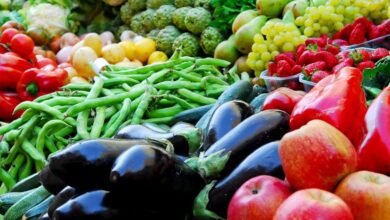MILAN — Searing heat in the US Midwest is expected to see global food prices snap three months of declines in July, the UN said on Thursday, as some international grain prices surged to highs last seen during the 2007–2008 food crisis.
Concerns about extreme hot and dry weather hitting US corn and soybeans ignited a grain rally in the second part of June and a series of crop quality downgrades by the US Department of Agriculture has added fuel to the rally, which brought Chicago corn futures to a 10-month high this week.
"We do not rule out further price increases and more price volatility until US harvests. The next couple of months are going to be quite bumpy," the UN Food and Agriculture Organization's (FAO) senior economist and grain analyst Abdolreza Abbassian told Reuters as the body published its June food price index.
Soybean prices jumped to their highest levels since 2008 while US wheat hit its highest price in over a year, tracing corn's rally.
"Corn is such a driver now in terms of market sentiment — for at least a few weeks if not months — anything that goes wrong beyond what the market has anticipated would certainly create a turmoil in the market," Abbassian said.
Food security last grabbed the attention of world leaders after record-high food prices in February 2011 contributed to the protests known as the Arab Spring in the Middle East and North Africa last year.
Tighter stocks
The FAO slashed its 2012 world cereals output forecast to 2.396 billion metric tons (2.64 billion tons), 23 million metric tons down from a previous estimate, driven by a 25-million metric ton cut in its view of the US corn production to 350 million metric tons.
The FAO also cut its estimate of the closely watched global grain stocks for crop seasons ending in 2013 to 536 million metric tons, down 12 million metric tons from the previous forecast but still 4 percent higher than their opening levels.
However, the FAO does not expect any major problems with global food supplies in 2012–2013 due to robust rice and wheat supplies and lower demand from food, feed and biofuels industries due to global economic slowdown, Abbassian said.
The FAO cut its view of the world wheat output by about 3.2 percent to 678 million metric tons in June, as downward adjustments in Australia, China and the Russian Federation more than offset upward revisions in the European Union and Morocco.
The FAO Food Price Index, which measures monthly price changes for a food basket of cereals, oilseeds, dairy, meat and sugar, averaged 201 points in June, down from a revised 205 points in May and at the lowest level since September 2010, the FAO said.
Economic uncertainties and generally adequate supply prospects kept world prices of most commodities under downward pressure, although growing concerns over adverse weather sustained prices of some crops toward the end of June, it said.




